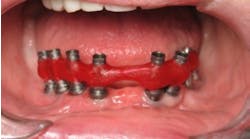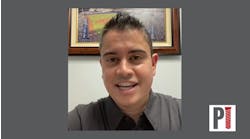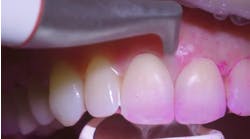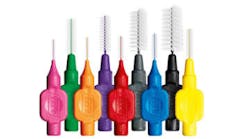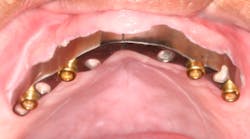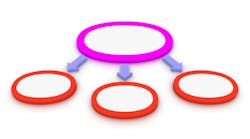By Steven Pigliacelli, CDT, MDT
The baby boomers are nearing their retirement day and not liking it very much. As they retire from dentistry, many of them are grumbling about the next generations: Generation X and Generation Y. You often hear complaints that this new generation is lazy, they have an overwhelming feeling of entitlement, and they don't have the same work ethic that the previous generation had when they began their careers. They wear big goofy shorts, have bad haircuts, and waste too much time on video games, the Internet, bad music, and social networking. Sound familiar? The only problem is that the generation prior to the baby boomers also complained of torn jeans, long hair, bad rock 'n' roll, and laziness with no work ethic. We were at a crossroads then, and we are again now. Although there usually is a gradual evolutionary change from year to year and generation to generation, every so often a large generational gap presents itself. I believe this is what is happening in the dental industry today.
Generations X and Y as a whole have a different value system than previous generations. They are used to getting what they want quickly and efficiently. They seek new ways to get things done. They have been brought up in a technological world with instant satisfaction and creative means of expressing themselves. Growing up in a society of social networking and interactive role-playing video games has given them an edge in embracing the latest technological advances as well as interacting with each other as peers in a team approach to dentistry.
Multitasking is a common ability among members of the new generation. They are used to communication via AIM, Facebook, texting, Skype, as well as face-to-face interaction simultaneously. These are wonderful abilities to have when you are trying to run a business, much less a dental office. If there is one business that requires multitasking, dentistry is the one. The dentist must be able to treat the patient while communicating with office staff, dealing with office drama, worrying about the next patient, handling the family of the patient in the chair, and answering phone calls from the lab, among other things. Adapting to new computer software, digital solutions, and paperless office systems can be a strain to a baby boomer who still thinks the Internet is a series of tubes that belong to America Online. Computer-based technology and the Internet will play a much bigger part in dentistry of the future.
For example, treatment planning software for implant placement or esthetic reconstruction are similar to computer programs such as Photoshop and many of the game system programs. The ability to draw, design, and plan with a mouse is a must for the future dentist.
The new generation also has a different business attitude. A common criticism of the industry in the past has been that educators don’t teach business at dental school. The modern generation has a unique understanding of business, marketing, and communication.
Role-playing games are effective tools for training and education; many colleges are employing role-playing programs for the purpose of teaching a variety of courses. Many of the games require multiplayer interactions that reflect social customs, politics, and business. Players must understand the ramifications of their actions in these games, such as budgeting their income to be able to fulfill the requirements to stay in the game. They must learn skills that enable them to pay some form of price and honor modes of decorum. Simple games such as online farming reward the player for smart investments as well as punish them for bad ones. Crops fail, rents are late, and possessions are forfeited to pay for repairs. This is a conditioning that comes in very handy when real life asks for sacrifices and long-term investments. These games are so influential upon patterns of behavior that some may argue this is a method of corporate brainwashing and must be carefully monitored.
Study clubs and dental meetings are a foundation of the dental industry. The ability to get along with others and share knowledge is something that truly drives the industry as a whole. The ability to share and communicate with other specialties is an incredible benefit to the patients. All of this is a natural for a person brought up on social networking and gaming interaction. Asking for help, aiding a friend, and sharing information are done on a daily basis by this computer-savvy generation. This willingness to share information will benefit the team concept and help the future of esthetics in dentistry.
Another noticeable trend is that Generations X and Y have different goals and attitudes toward the workday. Leisure time is as important as the work time. Work Hard ... Play Hard can be considered the motto of the younger generation. More flexible work schedules allow more time for personal and nondental activities. It is not uncommon for a dentist to pursue other interests while still practicing dentistry. Many dentists prefer to work in more than one office, working a variety of days treating a variety of patients. They usually work for other dentists in one or both of these offices or work in an office of many partners who all work a flexible schedule.
Finally, the focus of dental education is changing as well. The current curriculum at dental schools has been to offer minimal to no lab training. Gone are the days of waxing and casting full-cast crowns, porcelain-fused-to-metal crowns, and making full dentures. The current generation of dentists will not be trained in these skills, thus making them more dependent on dental labs.
Unfortunately, the dental technician population is shrinking at an incredible rate due to the lack of schools, lack of interest in the field, the retiring and dying of the old times, the role of CAD/CAM and the growth of outsourcing dentistry to foreign countries. The role of the lab technicians will necessarily evolve into more of a partnership than the customary dental laboratory relationship in place today. The kind of communication required for technicians and dentists is one-on-one, face-to-face, with the ability for some custom work. With the advent of computer CAD/CAM technology and digital office systems, such as X-ray, impression, i-CAT systems, etc., the dental industry is changing dramatically to meet 21st century expectations. The demands on the dentists and lab technicians will change. The team concept is crucial in the treatment of complex rehabilitation cases. This is impossible with a lab 5,000 miles away or an untrained commercial technician. The dentist and technician need to be able to work together as professionals, sharing ideas, strategies, and techniques. They need to be able to meet with each other, and with the patient if necessary, to discuss complex cases. Most labs place untrained, computer-literate people in positions of operating their machines. The problem with this strategy is that you cannot rely on the computer to do the job 100% correctly. The technician must understand the fundamentals of dental technology, size, shape, occlusion, porcelain support, etc.
While these changes may seem daunting, they herald exciting new possibilities for dentistry, as long as we embrace it together as collaborative professionals.
Author bio
Steven Pigliacelli, CDT, MDT, is vice president and director of education, Marotta Dental Studio, Inc. With more than 29 years experience at Marotta Dental Studio as a dental implant specialist, he is a Certified Dental Technician with the National Board for Certification and has an MDT, Master of Dental Technology, from the ASMDT Certificate program at NYU. He is a faculty instructor in postgraduate prosthodontics at New York University, College of Dentistry, Department of Prosthodontics New York, N.Y. He is also a technical consultant at North Shore University Hospital/LIJ in Manhasset, N.Y. Mr. Pigliacelli manages Marotta Dental Studio and is the technical liaison between the dentist and the laboratory for case planning, telephone support, and quality control. He writes all of Marotta’s educational and promotional materials, newsletters, and presentations, as well as maintaining its website, www.marottadental.com. He is the institute director for the Long Island Institute for Advanced Dental Studies, an educational consortium for dentists, technicians, and dental students, as well as the vice president of the Ethical Dental Laboratory Alliance. He has written articles for various dental journals, and he lectures and performs hands-on demonstrations at study clubs and seminars.

